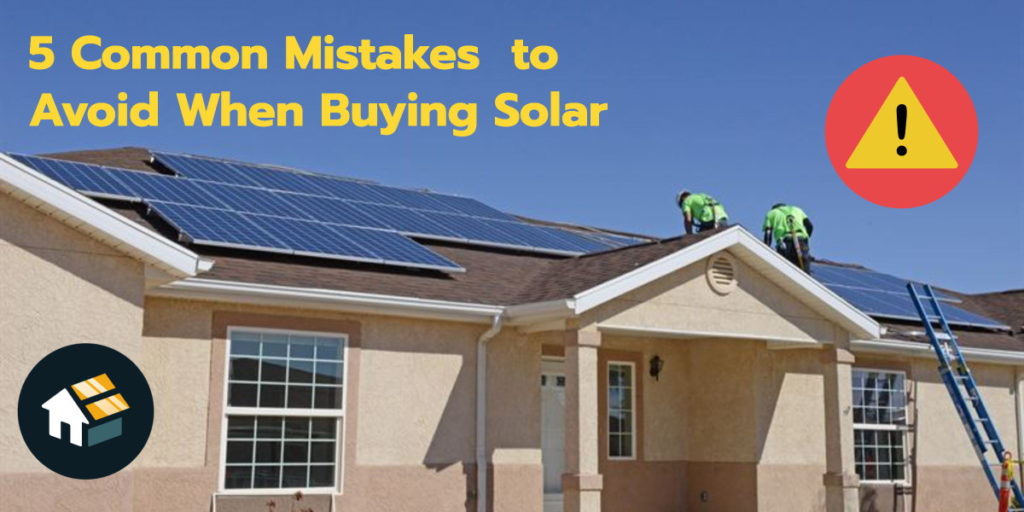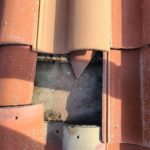
Table of Contents
5 Common Mistake Homeowners Make when Buying Solar
By specializing in solar repair, we've been able to see every flavor of a bad solar panel installation project. We want to help educate future solar energy customers by helping them avoid the top 5 common mistakes when buying solar panels for their home. Most individuals who go solar love the savings, but find the process of getting solar a challenge. Adding solar panels to your roof can be a large financial commitment, and you should expect the best quality work for your home. By avoiding the top 5 common mistakes when buying solar, you can avoid having a poor solar installation experience. Mitigating these mistakes it will help you reap more benefits from your solar energy system.
1. Underestimating Energy Consumption
Most homeowners in order to save costs aren’t forthcoming with their energy needs and try to give the minimal number possible to reduce their upfront costs as much as possible. The moment they do go solar, they start splurging on their energy consumption and it does a disservice to how much energy they can offset. In addition, trying to add more panels in the future is much more expensive compared to properly sizing your residential or commercial PV system initially.
When you go solar, your electric company expects electricity costs will go down by a certain amount, so much that they will only bill you once a year for electricity. This annual bill is known as a “True-Up Statement” and provides the net electricity usage for the year and summarizes the charges and credits for each month. However, if you end up not buying enough solar to offset 100% of your usage, you could be sent a bill since you may have only decreased your electricity costs by 80% or less.
There is a sweet spot to offset your solar by the right amount by not too much. You want to ensure that all the electricity you generate is credited at retail rates for maximum savings while not having to pay a True-Up bill at the year of the year.
2. Only considering ROI
There is nothing wrong with considering your ROI when it comes to adopting a Solar PV System for your home. A home can be seen as an investment for the future, and an avenue to building equity. However, there are numerous factors beyond how much wattage a solar panel can offset when factoring in ROI for adopting rooftop solar. It is important to conduct research and vet the installer.
There are numerous aspects that could go wrong with how solar is installed and it is important to be aware of a few areas of how you could be impacted from a poor installation job such as a leaky roof, equipment failure, and poor customer experience. A poor installation job requires a technician to come multiple times to fix and repair their mistakes, which could also force a homeowner to stay at home and wait for the technician.
3. Not replacing the roof from the start

Roofs are typically one of the most neglected parts of your home, and the most important element of your home for installing solar. If a roof has less than 10 years to go, you may want to consider replacing your roof despite the initial cost. Many companies will overlook the fact that the roof may need replacing in the near term and still install solar in order to capture revenue today, at the expense of a consumer.
In order to reduce costs for roofing, you need to break down costs into three general categories:
Materials: Everything from comp shingles, rock & tar, underlayment, to protective coatings, etc.
Labor: Skilled workers who tear off the old roof and install your new roof
Disposal Costs: Recycling or throwing away your older roof material after they have been removed.
There are unforeseen issues that could unexpectedly add more costs to a typical reroof. In older homes we see common issues that stem from:
Skip Sheathing Roof - We have to put all new plywood over that. The removal has to be done with caution. Much more trash, and harder to do labor on.
Dry-Rot / Termite Damage - This is typically where the roofer will have to cut out the cancerous piece of wood and replace it with a new piece of wood.
Relocating Plumbing Vents - For the most part, every plumbing fixture has a vent pipe that is associated with it. These vents are typically interconnected in many instances and at times need to be moved in order to ensure that you maximize your system size.
If upgrade your roof at the same time you install solar, you should be able to save on labor costs and disposal costs. More importantly, you should be able to enjoy your solar PV systems for the entire duration of your solar PV warranty.
4. Not Knowing the Various Solar Loan Programs
There are multiple different types of solar loan programs, and you should be able to understand which one best matches your needs and situation. According to the US Solar Market Insight Association, (SEIA) a typical system for a single-family residential home can cost anywhere between $15,000 and $29,000.
Most solar installers and contractors don’t explain the process and details of a solar loan program. It is important to know under which scenarios it is helpful to lease vs utilize the Hero / PACE program.
They also don't explain the process of transferring a solar agreement, this could be a hassle when it is not expected. Telling the client the ITC credit is guaranteed, its not our responsibility to explain and qualify them but they are clear scenarios where a lease is a better option and for many reasons or even a Hero Purchase. Get the right information to help you cover the cost of going solar.
Solar Lease / Power Purchase Agreement (PPA) - This is the most common way for homeowners to finance their solar systems. With solar leasing or a power purchase agreement (PPA), a third-party solar financing company will purchase and take care of your solar panels. You pay a fixed rate for the solar electricity the system generates. This method allows the purchaser to skip the upfront cost and lock in low rates for solar electricity for up to 25 years.
It is important to note that the PPA is similar to a lease but you aren't leasing the solar system, instead you're agreeing to purchase the power at a set price! Best of all, for both solar PPAs and solar leases, you aren’t purchasing the system, but you do have a buyout option at the end of your lease. (Solar Lease vs Solar PPA vs Solar Purchase) The buyout price is typically based on the market value of the system at the time. At the end of a lease, it will produce about 75-80% efficiency.
Hero Loans & Pace Programs - Is a specific type of financing called, Property Assessed Clean Energy (PACE), which is a special form of financing that is available in areas where the local government is providing special financing. This financing is typically for individuals who have had poor credit but want to be able to buy solar panels.
In order to access PACE financing to install solar panels on your home:
1. A local government makes funds available for homeowners to access
2. An authorized PACE lender provides those funds to property owners who want to make clean energy improvements like installing solar panels on their home or business.
3. Homeowners pay back this loan, through an assessment that is attached to their annual property taxes.
5. Permitting and Inspections
It is important to know what parts of your home may be unpermitted, and these rules may differ based upon whether you’re a county or a city,
This could create a substantial delay with how quickly your solar energy system could be installed.
The most common instance we see is when a homeowner submitted a permit and they did an upgrade to a home.
However if they did an upgrade, but never got a final inspection their pending permit may not be closed. This could be a hindrance to applying for a new permit and draw out the length of how long it may take for you to reap the benefits of solar.
Considering Solar Panels for Your Home?
If you're considering going solar, Forme Solar can definitely help! We want to empower homeowners in their shift to renewable energy sources and reduce their energy costs. Make sure that going solar will match your needs by checking out our solar panel installation guide (read here).
Contact us, today so you can start the process of figuring out if solar panels are the right option for you and your house.















